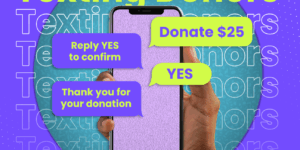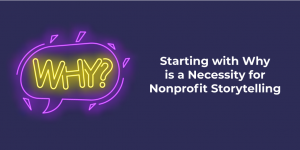1. Focus on capturing meaningful measurements
The goal is to illustrate the “intangible” with something that people both inside and outside your organization can easily comprehend and feel while aligning that measurement with an emotional story.
2. Provide opportunities for people to share
Put tools in place that will allow those benefiting from and carrying out your work to share. Utilize surveys and polls, social media, and even public forums to gather testimonials that can be used in grants, on our website, and as part of larger stories of progress.
3. Follow the journey
4. Remember the power of one
But why does this matter? It’s hard for a person to think in terms of everyone benefiting from the work. In addition to being impersonal, a story about thousands is faceless. Another reality that organization’s must face is that the experience of the people being served is different from the day to day of a donor. However, if a story is being shared about a single person or family it’s likely that a donor—while farther removed—can relate in some way. The objective is to foster a sense of empathy and in turn, make a deep emotional connection.
5. Integrate these stories across all public-facing collateral
Don’t forget these overlooked places to sneak in a story:
– Online donation confirmation page
– Stories or blogs on your website
– Gift acknowledgements or receipts
– Social media posts or special features
– Videos and other forms of promotional marketing
With limited resources, marketing materials are often a big investment for nonprofits. Make sure that what you put time and money into is telling the story it needs to!
The Wrap Up
Unique stories will set you apart from other organizations in your community doing similar work to yours. In a crowded marketplace, it’s imperative that your message stands out and captures the support of an interested individual on a level beneath the surface. While so much of our time is spent focusing on outbound communications, it’s important to note the benefits of a unified message within your organization. A cohesive message can:
- Help keep your staff engaged and boost morale by reminding them why they come to work each day
- Aid in the development of programs that connect closely to your core, and not just because they’d be fun
- Drive donor loyalty and giving capacity by demonstrating impact in a relatable way
- Serve as rallying points for key stakeholders that support you in some way
- Provide focus and talking points for your board to master and make their own
You Might Also Enjoy:
+ Storytelling for the New Year: Part One
+ 5 Ways to Put Your Donation Page to Work
+ Before You Make the Ask: Build Relationships By Being Personal
Like what you see? Stay in touch!











